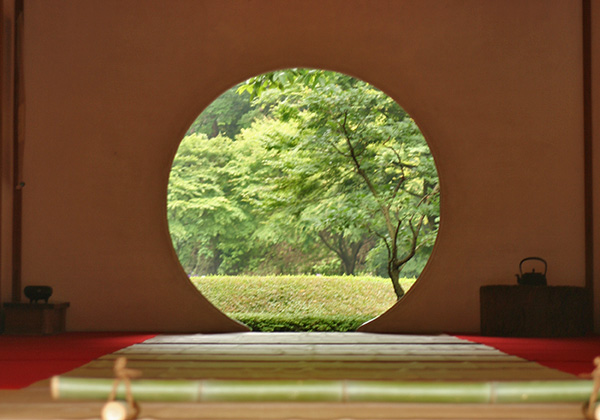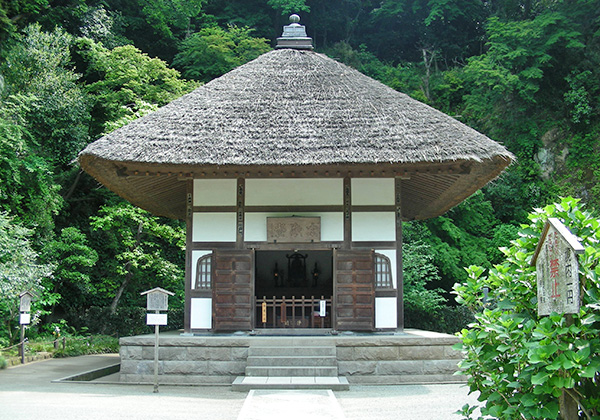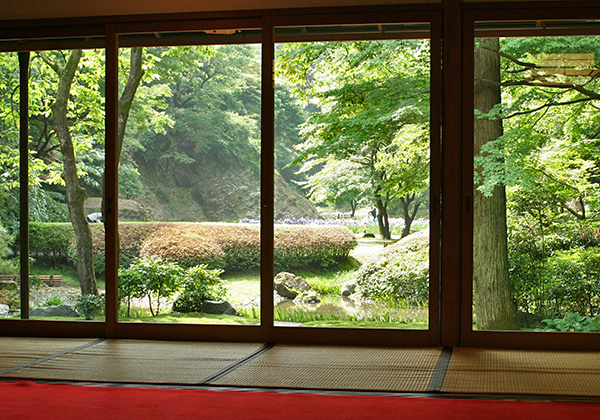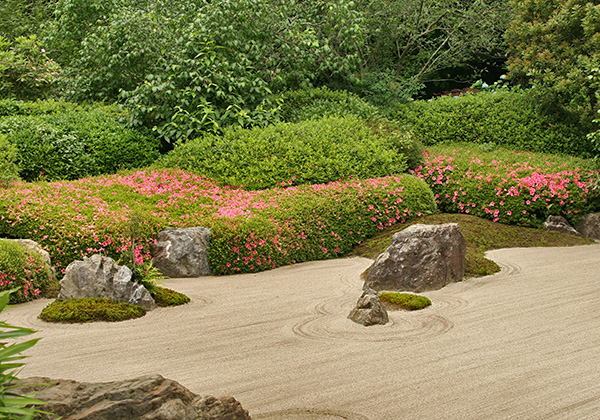Meigetsu-in
| Official Name | Fukugenzan Meigetsu-in {Pronounced foo-koo-ghen-zan may-gets-in} |
|---|---|
| Religious sect | Kenchoji school, Rinzai (Zen) sect, Buddhism |
| Founded | in 1383 by Norikata Uesugi {noh-re-kah-tah woo-eh-soo-ghe} |
| Founding priest | Shugon Misshitsu {shoo-gon mis-sheets} |
| Main object of worship | Statue of Sho Kan'non |
| Address | 189 Yamanouchi, Kamakura, Kanagawa 247-0062 (show route from current location ) |
| Location | 700 meters east-southeast of Kita-Kamakura Station |
| Time needed to get there | 10 minutes |
| Admission | JPY500 |
| Open | 9:00-16:00 (8:30-17:00 in June) |
| Phone number | 0467-24-3437 |
| Restrooms | Available |
Historical Overview
According to the Temple's records, its origin dates from 1159 when a warrior who lived near here was killed at a battle between the Minamoto and the Taira Clans. His son built a small temple here to console the souls of his father and other war-dead, dedicating to a statue of Nyoirin {nyo-e-rin} Kan'non (Cintamani-cakra in Skt.) to it.
In 1256, Fifth Regent Tokiyori Hojo {toh-key-yoh-re hoh-joe} (1227-1263), who also lived near here, stepped down from the Regency at the age of 29 and entered priesthood under the leadership of Doryu Rankei {doh-ryu ran-kay} (1213-1278), a Chinese Zen priest whom Tokiyori invited to Kamakura and nominated for the founding priest of Kenchoji. At the same time, Tokiyori built a small prayer hall and named it Saimyoji {sigh-myo-gee}. But, this hall was abolished after he died several years later.
It was Tokimune {toh-key-moo-neh hoh-joe} Hojo (1251-1284), Tokiyori's son and the Eighth Hojo Regent, who erected a full-fledged temple in 1268 near his father's prayer-hall to hold religious services. The new temple was called Zenkoji {zen-koh-gee}. Records show that at the memorial service held in 1323 at Engakuji for Sadatoki {sah-dah-toh-key hoh-joe} Hojo (1271-1311), the Ninth Hojo Regent, more than 90 priests attended from Zenkoji.
The structures of Zenkoji was expanded in 1383, and included among the sub-temples was Meigetsu-in built by Norikata Uesugi (1335-1394), then Vice Governor of Kamakura. He nominated Shugon Misshitsu (?-1390) as the founding priest, who was a six-generation down disciple of Priest Rankei. Meigetsu-in was named after Norikata's posthumous name and became the family temple of the Uesugis in Yamanouchi district of Kamakura. (Meigetsu means a full moon). Zenkoji continued to thrive until the late 16th century getting patronage from the rulers in power. However, it did not necessarily flourish thereafter, and finally was on the verge of abolishment in the face of the Meiji Imperial Restoration of 1868. Only sub-temple Meigetsu-in managed to survive, that is what we see today.
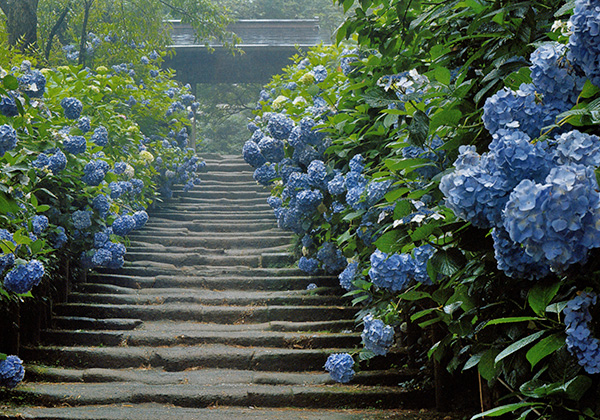
Shiyoden {she-yoh-den} or Main Hall
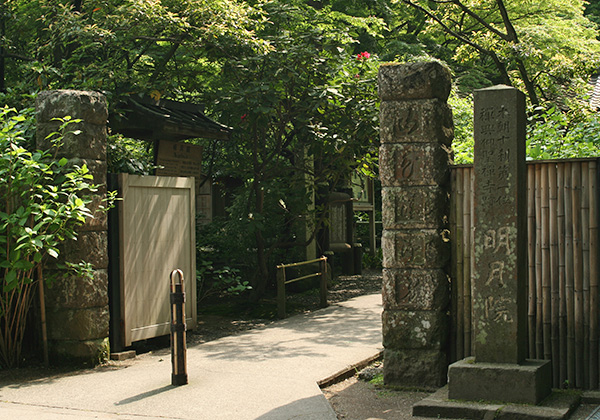
As its appearance indicates, the Hall is new, rebuilt in 1973. The main object of worship is a sedentary statue of Sho Kan'non or Arya-avalokitesvara in Sanskrit. The inscriptions affixed to the statue tell us that it was chiseled in 1309 and enshrined at a Zen temple named Ji-onji {gee-on-gee} (no longer exists) at first. Then in 1520, it was brought here as the main object of worship of Meigetsu-in. The 54-centimeter tall wooden, sedentary statue is beautiful and worshipped by many adherents, though relatively small in size.
Until 1992, the statue had been defined as Nyoirin Kan'non. The admission ticket I received in 1989 in exchange of a fee clearly says so. But, today's brochure states it is Sho Kan'non. I asked a receptionist one recent day why it was changed. She answered that only the title has been changed and the statue itself remains the same. I could not understand her reply, because statues of Nyoirin Kan'non are quite different from those of Sho Kan'non in their appearances. My guess was that the Temple holds both statues and may have changed the main object of worship from Nyoirin to Sho Kan'non. Still mystified, I took liberties to write a letter to the Temple and asked if my guess was right, enclosing a stamped, self-addressed envelope. Two days later at night, the chief priest of the Temple was kind enough to give me a call (I did not give my home telephone number) and told me how come it was changed. He said that the statue in question has long been argued among experts over whether it is really Nyoirin Kan'non, and recent study concluded that it should be categorized as Sho Kan'non from the academic perspective. As a result, the Temple changed its title to Sho Kan'non in 1992.
